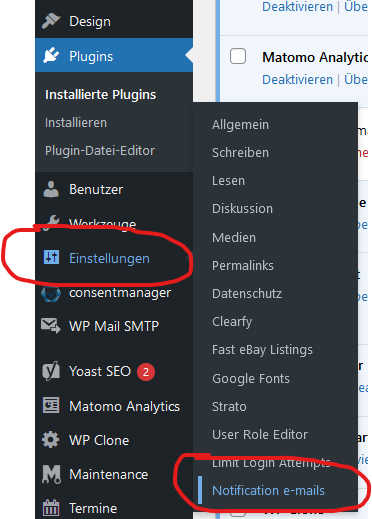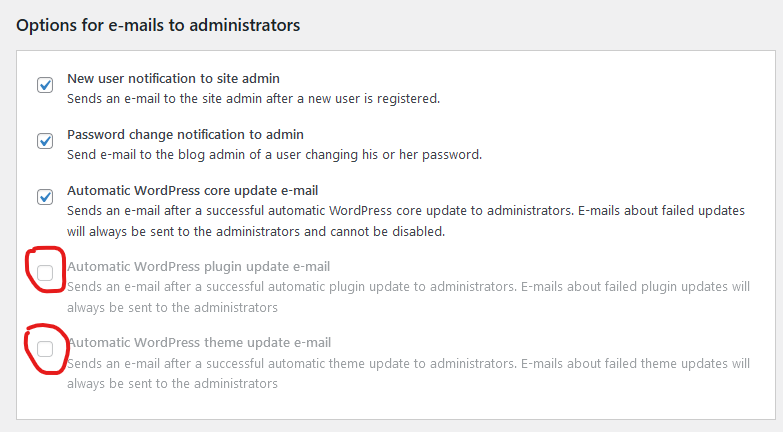Hat man erst mal ein Theme und einige PlugIns installiert und die automatischen Aktualisierungen sind aktiviert, wird man von WordPress per E-Mail informiert, sobald das Theme oder ein PlugIn aktualisiert wurde.
Das kann interessant und hilfreich sein; denn Sinn und Zweck eines Updates ist ja grundsätzlich, dass Fehler in der vorherigen Version beseitigt wurden oder neue Funktionen hinzugekommen sind, oder das Theme/PlugIn an die neueste WordPress-Version angepasst wurde.
Allerdings erhält man dann jedes Mal eine E-Mail, sobald ein Update durchgeführt wurde. Und abhängig von der Anzahl der verwendeten PlugIns kann das häufig der Fall sein:

Möchte man keine Informationen mehr über aktualisierte Themes oder PlugIns, dann hilft das PlugIn Manage the notification e-mails:

Nach der Aktivierung findet man das PlugIn hier:

Unter Options for e-mails to administrators können nun die Flags für Themes und/oder PlugIns entfernt werden:




0 Kommentare